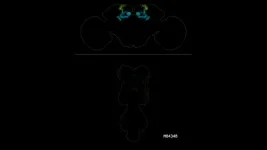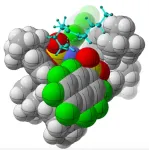Key points:
According to two trials of 11,000 pregnant women in India and in Tanzania, low-dose calcium supplementation (500 milligrams per day) appears as effective at reducing the risk of preeclampsia and preterm birth as high-dose calcium supplementation (1,500 milligrams per day).
The World Health Organization currently recommends high-dose calcium supplementation—equivalent to three calcium pills a day—for pregnant women in contexts with low-calcium diets, predominantly low- and middle-income countries. Lowering the pill burden to one 500mg calcium pill per day would reduce adherence barriers for women and reduce costs for governments and health programs without sacrificing health benefits.
Boston, MA—To help prevent preeclampsia and preterm birth—common complications in pregnancy that can be fatal to women and newborns—low-dose calcium supplementation (equivalent to one 500-milligram pill per day) may be as effective as the World Health Organization (WHO)’s recommended high-dose calcium supplementation (equivalent to three 500-milligram pills taken throughout each day), according to a new study led by Harvard T.H. Chan School of Public Health and collaborators in India and Tanzania.
While calcium supplementation is a known intervention to help prevent preeclampsia and preterm birth—it is estimated to halve a pregnant woman’s risk of developing preeclampsia and reduce an infant’s risk of being born preterm by 25%—the study is the first to evaluate the efficacy of a low-dose regimen versus a high-dose regimen. The findings provide an opportunity to revise the WHO’s current recommendation that women with low-calcium diets—most women who live in low- and middle-income countries—receive high-dose calcium supplementation throughout pregnancy.
The study will be published on January 11, 2024, in The New England Journal of Medicine.
“The current recommendation for pregnant women to take three calcium pills per day presents feasibility concerns for women and cost concerns for governments and public health programs,” said senior author Wafaie Fawzi, Richard Saltonstall Professor of Population Sciences and professor of nutrition, epidemiology, and global health. “As such, most middle- and low-income countries have not implemented calcium supplementation in pregnancy, leaving women and infants unnecessarily vulnerable.”
The researchers conducted two randomized, double-blind trials of 11,000 pregnant women in India and 11,000 pregnant women in Tanzania to assess if 500mg of calcium per day was as effective as 1,500mg of calcium per day in reducing the risks of preeclampsia and preterm birth (defined as birth before 37 weeks of gestation). All of the participants were pregnant for the first time, putting them at higher risk for preeclampsia. Starting at less than 20 weeks of pregnancy, they received monthly supplies of daily calcium supplementation, consisting of either three 500mg calcium pills or one 500mg calcium pill and two placebo pills. Their health was monitored during clinic visits each month of their pregnancy, at delivery, and at six weeks postpartum.
The study found that low-dose calcium supplementation was as effective as high-dose calcium supplementation in preventing the risk of preeclampsia. In the India trial, the incidence of preeclampsia was 3.0% among women taking 500mg of calcium per day and 3.6% among women taking 1,500mg of calcium per day. In the Tanzania trial, the incidence of preeclampsia was 3.0% and 2.7%, respectively.
The findings on preterm birth were mixed. In the India trial, the incidence of preterm birth was 11.4% among women taking 500mg of calcium per day and 12.8% women taking 1,500mg of calcium per day, indicating a similar effect of the two doses. In the Tanzania trial, the incidence of preterm birth was slightly different: 10.4% and 9.7%, respectively. However, when the researchers pooled the data from both trials, they found the effect of low-dose supplementation was not significantly different on preterm birth when compared with high-dose supplementation.
“Overall, our findings show that a single pill per day can be as effective as three,” said joint first author Christopher Sudfeld, associate professor of global health and nutrition. “With a reduced pill burden for women and lower costs for governments and programs that buy calcium pills, calcium supplementation should be considered widely implementable in the places it’s needed most—and should start saving thousands of maternal and newborn lives.”
The researchers noted that the study had some limitations. In line with ethical guidelines, the study did not include a placebo group, thereby precluding further comparisons between low- and high-dose calcium supplementation and no supplementation. Additionally, because the participants were mostly young women with low risk of chronic hypertension, it is not clear how generalizable the findings are to other pregnant populations.
Other Harvard Chan authors included Alfa Muhihi, Lown Scholar, and Nandita Perumal, visiting scientist, in the Department of Global Health and Population; Molin Wang, associate professor in the Department of Epidemiology; and Christopher Duggan, professor in the Department of Nutrition.
Funding was provided by the Bill & Melinda Gates Foundation (grant OPP1172660), the National Institute of Diabetes and Digestive and Kidney Diseases (grant P30 DK040561), and the Canadian Institutes of Health Research Fellowship (grant 201910MFE-430812-197459).
“Two Randomized Trials of Low-Dose Calcium Supplementation in Pregnancy,” Pratibha Dwarkanath, Alfa Muhihi, Christopher R. Sudfeld, Blair J. Wylie, Molin Wang, Nandita Perumal, Tinku Thomas, Shabani M. Kinyogoli, Mohamed Bakari, Ryan Fernandez, John Michael Raj, Ndeniria O. Swai, Nirmala Buggi, Rani Shobha, Mary M. Sando, Christopher P. Duggan, Honorati M. Masanja, Anura V. Kurpad, Andrea B. Pembe, Wafaie W. Fawzi, The New England Journal of Medicine, January 11, 2024, doi: 10.1056/NEJMoa2307212
Visit the Harvard Chan School website for the latest news, press releases, and multimedia offerings.
###
Harvard T.H. Chan School of Public Health brings together dedicated experts from many disciplines to educate new generations of global health leaders and produce powerful ideas that improve the lives and health of people everywhere. As a community of leading scientists, educators, and students, we work together to take innovative ideas from the laboratory to people’s lives—not only making scientific breakthroughs, but also working to change individual behaviors, public policies, and health care practices. Each year, more than 400 faculty members at Harvard Chan School teach 1,000-plus full-time students from around the world and train thousands more through online and executive education courses. Founded in 1913 as the Harvard-MIT School of Health Officers, the School is recognized as America’s oldest professional training program in public health.
END




